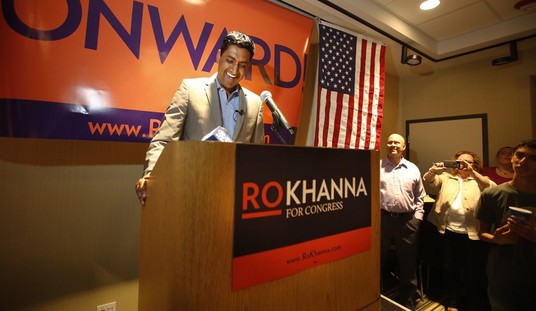Third time’s the charm? Perhaps only by proxy. After getting lambasted in a report from the State Department Inspector General over the use of her private e-mail server, Hillary Clinton and her team at first claimed that the report vindicated her, with an argument that threw Colin Powell repeatedly under the bus. After that response produced a volley of disgust over the spin, Hillary then retreated back to the position that “everyone does it” but that it might have been a poor choice in her case.
That didn’t exactly move the needle, so Team Hillary campaign chair John Podesta has attempted a clean-up on Aisle H. Buzzfeed’s Ruby Cramer got an e-mail sent by Podesta to donors that shows, oddly, that Podesta feels a lot more contrition over the secret e-mail server than Hillary has demonstrated over the past week:
In the days after the IG’s findings became public, Clinton made appearances on four television networks to push back on the report as nothing new. “There may be reports that come out, but nothing has changed,” she said. “It’s the same story.” …
The Podesta memo takes a more contrite posture, reminding backers three separate times that Clinton has called the email setup a mistake and continues to do so in the wake of the IG report. “The secretary has once again acknowledged this was a mistake,” Podesta writes. “If she could go back, she’d do it differently.”
Cramer also notes that Podesta seems to concede a point that Hillary refuses to acknowledge — that her use of a private, off-site, unsecured, and unauthorized e-mail server actually does differ from the practices of her predecessors:
Podesta also takes up one of the report’s key findings: that Clinton’s email practices did differ significantly from past secretaries of state, contrary to the candidate’s frequent argument that, broadly, her email use was not “unprecedented.” …
Although Clinton argued again in a Univision interview on Wednesday that her use of a personal account was “not at all unprecedented,” the memo from Podesta alludes to the distinct aspects of her arrangement. At the time, he writes, “she believed she was following the practices of other secretaries and senior officials.”
All of this, of course, is merely acknowledging as much of the obvious as the campaign can stand. Podesta claims that Hillary was unaware that her practices differed from her predecessors until informed of it by State … after the Benghazi committee discovered it. “It was not until the Department contacted her in 2014 that she learned this was not the case,” Podesta writes in his missive. Reeeeeeaaaaaalllllllly? If that’s the case, why did she spend all of 2015 and nearly half of 2016 still making that claim? Why, then, did Hillary not make the server available to the State Department immediately — and without deleting 31,000 e-mails from the system first?
Podesta urges Hillary’s supporters to put this in the context of her career. “While we understand the questions about Secretary Clinton’s email practices,” he writes, “we are confident that voters will look at the full picture of everything she has done throughout her career.” The New York Post’s Paul Sperry has a point to make about that very issue. Remember how over a million e-mails went missing in the middle of a series of White House scandals in the mid-1990s?
As first lady, Hillary was embroiled in another scheme to bury sensitive White House emails, known internally as “Project X.”
In 1999, as investigators looked into Whitewater, Travelgate, Filegate and other scandals involving the then-first lady, it was discovered that more than 1 million subpoenaed emails were mysteriously “lost” due to a “glitch” in a West Wing computer server.
The massive hole in White House archives covered a critical two-year period — 1996 to 1998 — when Republicans and special prosecutor Ken Starr were subpoenaing White House emails. …
During the Project X email scandal, career White House staffers and contractors found that someone close to the first lady had basically turned off the White House’s automated email archiving system. They fingered White House “special assistant” Laura Crabtree Callahan, who was overseeing the computer contractors despite obtaining computer science degrees from diploma mills. …
A 1998 contractor audit of the White House email accounts affected by the “snafu” shows that much of the omitted email was addressed to top Clinton officials — including then-deputy counsel Cheryl Mills and other aides close to Hillary. A federal judge “excoriated Mills” for failing to get to the bottom of the missing emails, Fitton pointed out.
What a coinky-dink! Yes, tell us more about how Hillary Clinton was unaware of precedent and policy when it came to ensuring that no e-mail trail led back to her operations. This is less a step in a new direction than it is a switch from one fairy tale to another.








Join the conversation as a VIP Member